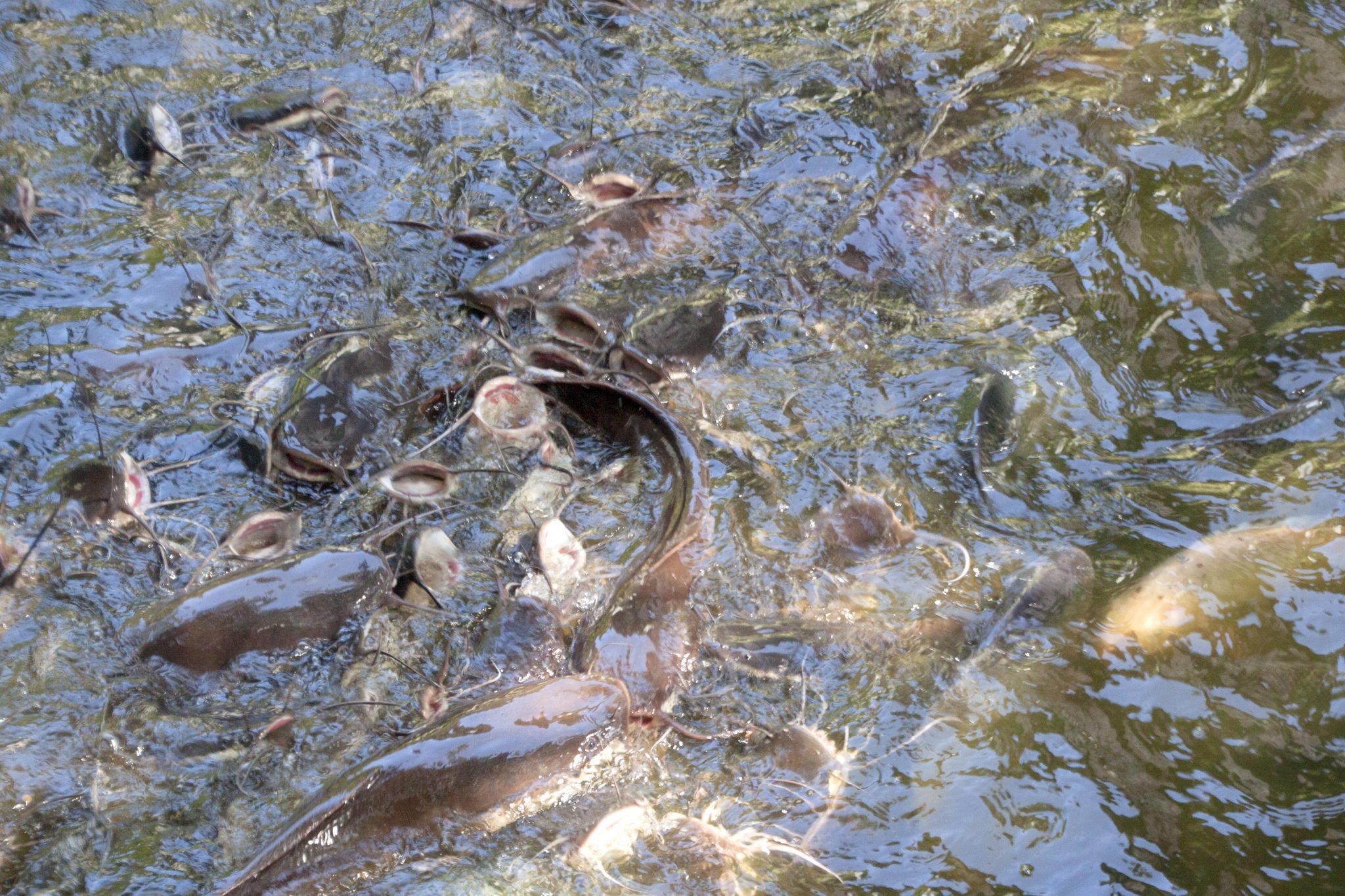Aquaculture

Wintertime feeding can help maintain the health and promote the growth of catfish. Since catfish are cold-blooded animals, their body temperature and rate of metabolism slow down as the water cools. If fed properly, adult catfish can gain from 5 to 20 percent of their initial weight during the winter, depending on the severity of the weather. And since many wintertime diseases are brought on by poor nutrition, regular winter feeding can also prevent costly losses and treatments.
Choosing the Right Feed
A good choice for feeding adult catfish during the winter is nutritionally complete sinking feed with 26-percent protein. This feed can produce excellent results when fed according to water temperature. Use 32-percent protein feed for fingerling catfish because these fish will eat and grow more than large fish. An advantage of sinking feed is that it will not blow to shore, and catfish naturally feed better on bottom, especially in the winter.
A small amount of floating feed mixed with sinking feed can be used to measure the fish’s activity, condition, and growth. Catfish will usually eat the floating feed only after they have eaten most of the sinking feed.
How Much To Feed
Table 1 shows the approximate percentage of total weight that should be fed at different water temperatures.
When starting catfish on sinking feed, you should first calculate the total weight of fish in the pond. The average feed conversion for healthy catfish weighing about 1 pound is 1 3/4 pound of feed to 1 pound of fish gain. Catfish weighing less than 2/3 pound should convert feed at about l l/2 to 1. Fish larger than 1 1/2 pounds should convert feed at a rate of 2 to 1 or greater. For example, if a pond has 30,000 catfish stocked as 0.1-pound fingerlings and fed 40,000 pounds of feed to date, then the present weight of fish can be calculated using the example shown below.
EXAMPLE:
30,000 fingerlings x 0.1 lb. each = 3,000 lb. initial fingerling weight
40,000 lb. feed + 1.75 conversion ratio = 22,857 lb. gain
Total = 25,857 lb. catfish + 30,000 fish = 0.86 lb. average weight
In this example, if the water temperature in the middle of the afternoon is 57°F,the farmer could check table 1 and find that these fish should be fed at 1 percent of their total weight. Or, that the fish will need about 260 pounds (0.01 x 25,857 lb.) of feed every other day.
The table, however, is only a guideline. You must use common sense when using sinking feed. With practice, the degree of feeding activity can be compared from one day to the next by watching how fast the fish muddy the water and in how large an area the fish are active. Activity will decrease greatly at very low water temperatures.
When and Where to Feed
During winter, catfish should be fed in the afternoon when the water is warmest. A catfish’s appetite is greater when the water is warming than when it is cooling. Also, shallow water 3 to 4 feet deep is a good area for feeding.
Table 1. Winter Feeding Schedule for Sinking Feed
| Adult Catfish ( 1/2 lb. and larger) | |||
|---|---|---|---|
| Temperature * 0F | % Protein to Feed | % of Total Fish Weight to Feed | Feeding Frequency |
| 45 to 50 | 26 | 0.5 | once/week |
| 51 to 55 | 26 | 1 | twice/week |
| 56 to 60 | 26 | 1 | every other day |
| 61 to 65 | 26 | 1.5 | every other day |
| 66 to 70 | 26 | 2 | every other day |
| Fingerling Catfish | |||
| 45 to 50 | 32 | 0.5 | 3 days/week |
| 51 to 55 | 32 | 1 | every other day |
| 56 to 60 | 32 | 1 | 6 days/week |
| 61 to 65 | 32 | 2 | 6 days/week |
| 66 to 70 | 32 | 2.5 | 6 days/week |
| * Water temperature (measure temperature along dam deepest water during afternoon). Measure the water temperature at a depth of 3 feet. |

